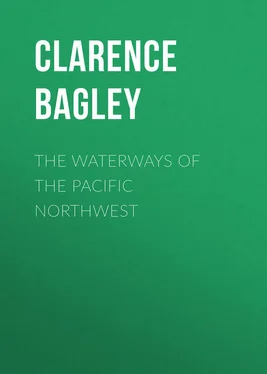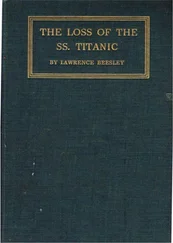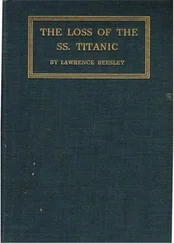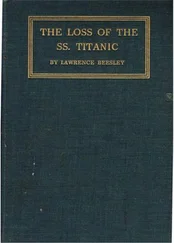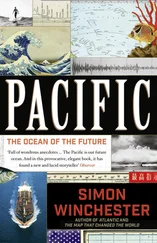Clarence Bagley - The Waterways of the Pacific Northwest
Здесь есть возможность читать онлайн «Clarence Bagley - The Waterways of the Pacific Northwest» — ознакомительный отрывок электронной книги совершенно бесплатно, а после прочтения отрывка купить полную версию. В некоторых случаях можно слушать аудио, скачать через торрент в формате fb2 и присутствует краткое содержание. Жанр: foreign_antique, foreign_prose, на английском языке. Описание произведения, (предисловие) а так же отзывы посетителей доступны на портале библиотеки ЛибКат.
- Название:The Waterways of the Pacific Northwest
- Автор:
- Жанр:
- Год:неизвестен
- ISBN:нет данных
- Рейтинг книги:5 / 5. Голосов: 1
-
Избранное:Добавить в избранное
- Отзывы:
-
Ваша оценка:
- 100
- 1
- 2
- 3
- 4
- 5
The Waterways of the Pacific Northwest: краткое содержание, описание и аннотация
Предлагаем к чтению аннотацию, описание, краткое содержание или предисловие (зависит от того, что написал сам автор книги «The Waterways of the Pacific Northwest»). Если вы не нашли необходимую информацию о книге — напишите в комментариях, мы постараемся отыскать её.
The Waterways of the Pacific Northwest — читать онлайн ознакомительный отрывок
Ниже представлен текст книги, разбитый по страницам. Система сохранения места последней прочитанной страницы, позволяет с удобством читать онлайн бесплатно книгу «The Waterways of the Pacific Northwest», без необходимости каждый раз заново искать на чём Вы остановились. Поставьте закладку, и сможете в любой момент перейти на страницу, на которой закончили чтение.
Интервал:
Закладка:
Clarence Bagley
The Waterways of the Pacific Northwest
Recently, as I have studied this subject its magnitude has grown more apparent. The space allotted my paper will permit little more than a historical sketch. It has been my life work to gather together the written and printed history of the Pacific Northwest, but I am not a professional writer of it.
For my purpose this caption refers to the Columbia River and its tributaries, and Puget Sound and the rivers emptying into it, including the Fraser, and their watersheds. The Columbia and Fraser are the only rivers that break through the great mountain ranges which parallel the shore of Washington and Oregon. With the Pacific Ocean only a few miles away, with its intricate network of great and lesser rivers, and its inland tidal waters whose aggregate littoral exceeds the distance between Cape Cod and Cape Flattery, it is remarkable how much of the exploration and industrial and commercial development of the Pacific Northwest has come from the East towards the West.
Alexander Mackenzie in 1793, when he discovered the upper reaches of the Great River; Lewis and Clark in 1805; Simon Fraser and John Stuart in 1805-6; Daniel W. Harmon in 1810; David Thompson in 1811, and a little later Wilson Price Hunt, and thereafter nearly all the leading men of the Northwest Company and the Hudson's Bay Company, braved the hardships and dangers of the trip over the Rocky Mountains and down the turbulent waters of the Columbia or the Fraser.
John McLoughlin, James Douglas and Peter Skene Ogden, Nathaniel J. Wyeth and the first missionaries, John C. Frémont, B. L. E. Bonneville, all led expeditions westward. Astoria was founded from the sea, and the expeditions of Astor's party to establish inland posts went up the river from the west, but they were all failures. For nearly seventy years the canoe and the bateau, the ox team or the horse team attached to the prairie schooner, were the instruments whereby the pioneers searched out the country and peopled its valleys and plains.
During the period between 1842 and 1855, old Oregon was mostly peopled by immigrants from the Mississippi valley, who came overland. After the completion of the railroad across the Isthmus in 1855, immigrants from near the Atlantic seaboard took steamer at New York City for Aspinwall, crossed the Isthmus by rail, thence to San Francisco by steamer and to Oregon and Washington by sailing craft or steamer. Troubles with Indians between the Missouri and Columbia, of frequence in the later 'fifties, followed closely by the great Civil War period, materially checked the influx of population overland. In fact, not until the completion of the Northern Pacific in 1883, and soon afterward of the Oregon Shortline, did the real development of Oregon and Washington begin.
In 1850 there were in old Oregon only 13,000 white settlers, 1049 of whom lived north of the Columbia River; in 1860 Oregon had 52,000, Washington, 11,500; in 1870, Oregon 91,000, Washington 24,000; in 1880, Oregon 175,000, Washington 75,000; in 1890, Oregon 314,000, Washington 349,000. The Northern Pacific Railroad had been completed in 1883, quickly followed by the Oregon Shortline, and Washington had gained nearly fivefold in a decade and had passed her older sister in population. In 1900 Oregon had 414,000, Washington 518,000; in 1910 Oregon had 673,000, with Washington 1,142,000, or a gain by the latter of more than 100 per cent in ten years. Oregon had an assessed valuation of 905 millions and Washington, 1025 millions. Neither had a bonded debt.
The Canadian Pacific, Great Northern, Chicago, Milwaukee & St. Paul, Northern Pacific, Oregon Shortline and Southern Pacific railroads had all reached Pacific coast terminals, and in consequence the great Northwest had gained remarkably in population, wealth and volume of trade and commerce.
In the Willamette valley the water power afforded by the streams of the Cascades and Coast ranges served to operate the early wood working and flouring mills, the woolen mills and small manufacturing plants, but on Puget Sound it was more economical to operate the saw-mills by steam where the ships could reach the docks easily and quickly.
Almost immediately after their arrival at Tumwater, the first American settlers began building a saw-mill and a grist-mill on the bank of the Des Chutes River. The irons were bought from the Hudson's Bay Company and the millstones were made from a large granite boulder near by. Both mills were run by water power. A few other small mills were constructed elsewhere on the Sound, but all were financial failures.
No large city has grown up in the Northwest on the site of the great water powers of the Columbia, Fraser, Willamette or smaller streams. Also, excepting Victoria and New Westminster, no large city has grown up on the site of the trading posts of the Hudson's Bay Company or the villages first started by the American settlers in the Willamette valley or on Puget Sound. Seattle, Portland, Spokane, Tacoma, and Vancouver in British Columbia, appeared on the map years after a dozen of their early rivals had been thriving little towns, and the most successful were founded by farmers from the Mississippi valley who, perhaps, had never seen a large city.
Конец ознакомительного фрагмента.
Текст предоставлен ООО «ЛитРес».
Прочитайте эту книгу целиком, купив полную легальную версию на ЛитРес.
Безопасно оплатить книгу можно банковской картой Visa, MasterCard, Maestro, со счета мобильного телефона, с платежного терминала, в салоне МТС или Связной, через PayPal, WebMoney, Яндекс.Деньги, QIWI Кошелек, бонусными картами или другим удобным Вам способом.
Интервал:
Закладка:
Похожие книги на «The Waterways of the Pacific Northwest»
Представляем Вашему вниманию похожие книги на «The Waterways of the Pacific Northwest» списком для выбора. Мы отобрали схожую по названию и смыслу литературу в надежде предоставить читателям больше вариантов отыскать новые, интересные, ещё непрочитанные произведения.
Обсуждение, отзывы о книге «The Waterways of the Pacific Northwest» и просто собственные мнения читателей. Оставьте ваши комментарии, напишите, что Вы думаете о произведении, его смысле или главных героях. Укажите что конкретно понравилось, а что нет, и почему Вы так считаете.
